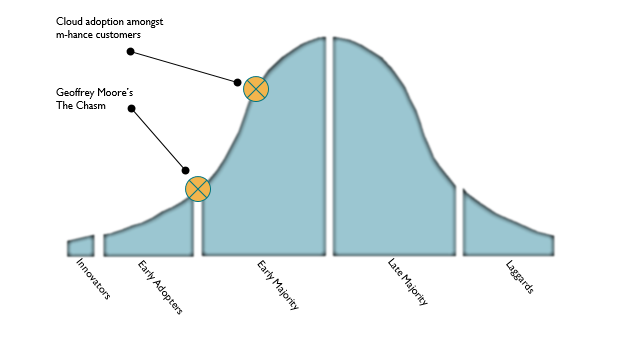A trend that became clear in a customer satisfaction exercise we recently ran was the amount of positive sentiment by m-hance customers who had embraced the cloud. Admittedly, that is not a ground-breaking statement. But for us, it is. Amongst the results were some recurring benefits that decision makers had underrated when considering deployment options. I’ve picked out some of the key ones for you to learn from.
1. Working from home (In fact, working from anywhere)
WFH’ing is definitely taking effect in modern office culture. Research by the London School of Business and Finance suggests that 36.5% of the UK workforce currently work from home and that 80% of those surveyed would prefer to.
What some of our customers hadn’t anticipated before deploying cloud-based business systems were some of the real benefits that home-based staff could bring. A number of our customers traditionally preferred staff to be in the office when working, for all the reasons you would expect. Offices are typically expensive working environments optimised for collaboration, motivation, productivity, security so why wouldn’t you want your staff there? Combined with internal systems having a reputation for being ‘clunky-at-best’ when accessed off-site, remote working was contained to extenuating circumstances only.
But when senior management teams discovered how productive working from home can be, opinions changed.
The same can be said for working from the local coffee shop, or on the road. With the flexibility of the cloud, staff members can log on and work anywhere (with an internet connection) – ultimately improving productivity.
2. Because it is the cloud
To the great relief of our consultants, the stigma surrounding risk of cloud adoption is well and truly behind us. There are not many reasons why an organisation would choose to upgrade their business systems and NOT consider a cloud environment. The tide has now turned. In fact, we find that a popular motivation for a new system can simply be; ‘we want to be in the cloud’ before customers fully understand the specific benefits. Why? It is perceived as the new standard. And department leaders don’t want to appear behind the curve. We cross referenced our cloud adopters against Geoffrey Moore’s buyer profiles diagram featured in Chasing the Chasm and found that cloud perception has left the ‘Early Adopters’ realm and is reaching the heights of the Early Majority.

3. Natural progression
In contrast to customers that choose a solution because it definitely is in the cloud, the significant proportion simply considers deployment options at face value, run through the usual procurement channels and eventually select the cloud. The takeaway? Cloud is mainstream. All of the major business solution providers are fully aware of this and have gone to extraordinary lengths to make your business’ transition as painless as possible. Successfully, I might add. The end result, business software has been designed for the cloud and the cloud has been designed for business software, making it a good time to embrace.
4. Any device
Traditionally, mobile apps and tablet editions of business software were diluted versions with limited functionality. They were better than having no access, say when you were on the train or out of office. But the REAL work happened when you got back to your desk. That is still how many customers perceive mobility. But as an extension of the previously mentioned working from home benefit, once you have full access to the entire business management system from your smartphone or tablet, there’s no going back. Something that has to be seen to be believed, and then you will wonder how you ever lived without it.
5. Same service as a FTSE organisation
Owning business software that receives the exact same treatment as FTSE organisations, and being stored in the same data centre environments too is an advantage that our consultants explain to customers after the initial discovery sessions. It’s a simple, obvious fact that reassures any existing data security concerns, usually amongst ITO’s. We know it works because it is a phrase that is repeated back to us. Why is it so reassuring? The project leaders of business wide software implementations that we deal with naturally want the most future-proof option available, with zero risks and a FTSE secure solution as standard
6. The last ever upgrade
Our customer feedback suggests that internal champions of business systems look forward to using the new system more so than the upgrade implementation project itself. This alone, explains why cloud-based business models are so popular amongst our customer base and beyond. Software as a service (SAAS), by definition, eradicates upgrade projects, outdated versions, and unsupported editions – and department leaders love that. Our feedback showed that business leaders want management solutions available as one up to date version with no dramas, no distractions and no CapEx or usage considerations, and with SAAS, that is what they get. Bliss.
There could have been a seventh point to this article about the reduced costs of SAAS. The truth is not everyone sees the cost benefits of cloud in the initial stages. The lack of capital expenditure in the medium term is obviously a bonus, but can be a sensitive subject when the IT department have recently invested heavily. But overall, the move to the cloud has been and still is for many, a positive, simple experience.
